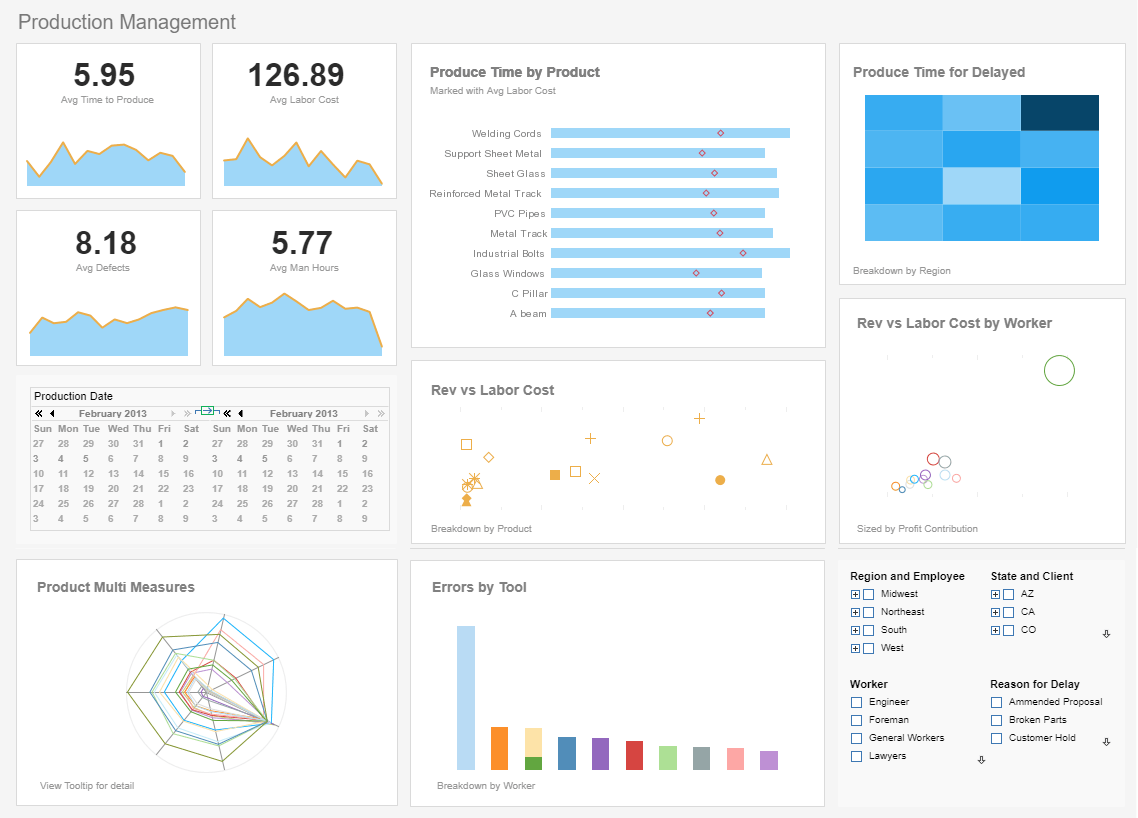InetSoft Webinar: Operational Decision Management
This is the continuation of the transcript of a Webinar hosted by InetSoft on the topic of "Improving Business Agility Using Performance Management Software." The speaker is Mark Flaherty, CMO at InetSoft.
Now let’s talk about operational decision management. This is based on what we know for sure, so our policies, our regulations, the things that we’ve always done as a business. It could be based on internal data or external data, but it’s based on things that we know to be true. And then on the right, we have analytical decision management. These are based on things that we can predict.
So I don’t know for sure if you’re going to default on a loan or if you’re going to commit some fraud, but I can devise models that will tell me what the probability that you’re going to default on a loan or that you’re going to take me up on my next marketing offer. So I’ve got, you know, things that we know for sure on the left and things that we can predict on the right. These are both being fed from all the data that I’ve got available to me, and they’re creating a decision service. And this decision service can then be called from any process from any application to be reused across the enterprise. So this now becomes an enterprise asset, something of real importance to the enterprise.
And that’s why I brought up that fact of governance because I need to have a very easy to use governance capability for this decision service or else this decision service cannot be a true enterprise asset. So we go to the next slide, this is a really nice, interesting example from the a university hospital.
| #1 Ranking: Read how InetSoft was rated #1 for user adoption in G2's user survey-based index | Read More |
Decision Support for Patient Admittance
They needed a BI system when they admitted patients to try to identify what the potential rare diseases were that those patients might have. And these diseases are so rare that a single doctor may only see this disease once or never in his or her career. And so if I have a patient coming in, and a doctor has never had an opportunity to diagnose a certain disease, how will they ever find one of these rare diseases. So they devised a decision management system to be able to combine business rules that they know, things about the patient, all the patient information with things that they can predict based on models that actually look at the patient information and determine what the probability of certain diseases is.
And based on this, they have this system where every time a patient is admitted, they run through the analytics system, and they’re able to save lives based on the things that they know for sure and then based on these predictive models that they can use to diagnose these diseases early so that they can really make a difference.
So going to the next slide, there are a lot of use cases for automated decisioning, and this is just a list of nine. In fact, on the bottom of this slide there is a URL if you want to go to our website we have case studies for each of these. But this is just the tip of the iceberg. These ones include identifying opportunities to increase profitability through product recommendation programs that are personalized through loyalty programs. Then you have automated sales commissioning, ensuring compliance, and claims validation. We see this all the time in insurance or in government, payment authorization, eligibility determination, and leveraging information to manage risks, underwriting and credit.
Decision Management for Border Control
Border control, that’s an interesting one. We actually saw one European government, they implemented a system using our technology to pre-validate all the customs declarations that crossed the border. They have 200,000 of these a day and instead of waiting for all these goods that cross the border to be validated right at the border, they do this in advance, and they run this through a series of business rules to determine whether it is a valid custom’s declaration.
So you know just there are a lot of cases for predictive analytics. I was presenting last week and one slide was completely devoted to all the different ways in which business rules and decision management can be used in account opening and account management, and the list was very long. There were 16 different kinds of instances for each of those two domains, account opening and account management, where banks were using decision management and where it can really make a difference.
Let me run really quickly just through a couple of more business intelligence examples, and then I’ve got a kind of fun one that I’d like to talk about. A credit card settlement organization has to do payment authorization and settlement across 36 different currency markets. You can imagine the number of rules, the number of regulations, the number of financial laws and regulation, and everything that governs the exchange of currency.
If I give you my credit card in France, and I am buying a good in Germany, if you can think about what has to take place for that financial transaction to be executed accurately and all the different regulations and then you multiply this times 36 different currency markets, and you think about the complexity, and they are actually using over 30,000 rules and 500 transactions types going across 4,000 institutions to institute this system that works across Europe.
 |
Read the top 10 reasons for selecting InetSoft as your BI partner. |
| Previous: Getting a BI Vendor or a BI Expert |



